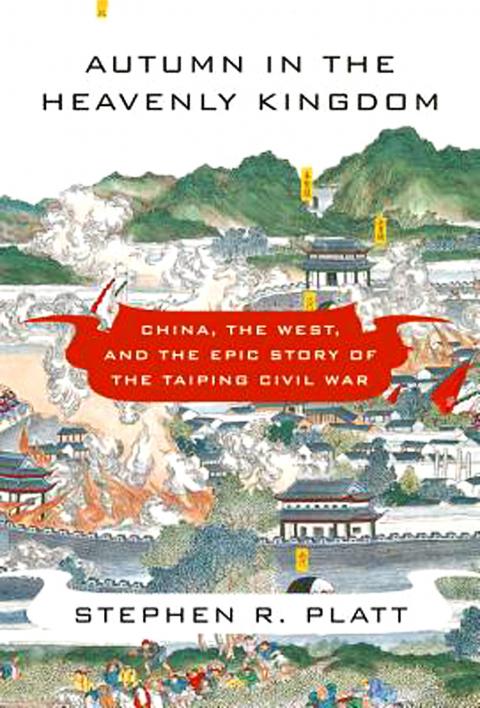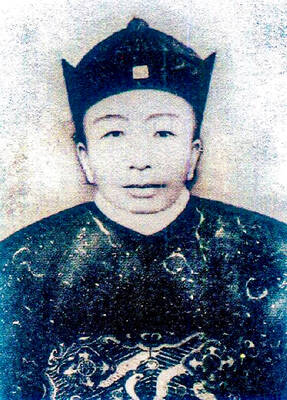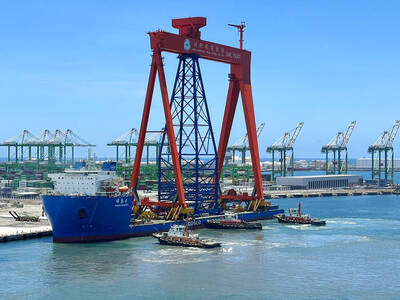There should be a term in German that describes the sinking feeling you have when reading a serious book of scholarship, one whose determined author deserves praise and tenure, that no civilian reader should pick up, that will not warm in your hands, that will make you regret the 10 hours of your life lost to it, and that, once put down, will not cry out to be picked back up.
Such a book is Autumn in the Heavenly Kingdom: China, the West, and the Epic Story of the Taiping Civil War, by Stephen R. Platt, a young academic who has a doctorate in Chinese history from Yale and is an associate professor at the University of Massachusetts, Amherst. He’s written a dense, complex work, about a war too little known in the West, in which the narrative pilot light never ignites.
This Chinese civil war lasted from 1851 to 1864, overlapping in its end with the American Civil War. Platt describes it as “not only the most destructive war of the 19th century, but likely the bloodiest civil war of all time.”

Some 20 million people lost their lives, many of them in grotesque ways. There are enough beheadings, flayings, rapes, suicides, disembowelments, mass killings and acts of cannibalism in Autumn in the Heavenly Kingdom — more about these things in a moment — that it can seem like a version of Sun Tzu’s (孫子) Art of War (孫子兵法) spat into being by Cormac McCarthy.
On one side of this war was the decaying 200-year-old Qing Dynasty of the Manchus. On the other side, the Taiping rebels, fueled by their messianic religious ideology that contained a whiff of Christianity, who wanted to reclaim China from the small alien Manchu elite. Platt doesn’t linger overly long on the parallels between this civil war and America’s, but it is among his central points that Britain’s disastrous intervention, for trade reasons, on the side of the dynasty in this Chinese war prevented it from becoming involved in ours.
The author approaches his subject from many angles. There are strong portraits of political and military leaders, though these figures can later blur in the mind.
The bulk of the narrative consists of battle after battle, and these also can blur. This was a grueling war; grueling too are descriptions of its many skirmishes. Reading about these battles is often like watching a football game in which no passes are thrown and every play is a run up the middle for 2 terrible yards.
Platt does several things quite well. His book is eloquent on racial issues, about how the British saw the Chinese as a profoundly inferior race. The Chinese, for their part, the author writes, had “an almost mystical belief in the superior weapons and skills of foreign soldiers,” a belief that was slowly shredded as this war moved forward.
The racism cut both ways. General Zeng Guofan (曾國藩), a Confucian scholar, thought the Britons were “uncivilized and unruly, and they didn’t understand the Confucian concepts of loyalty and trust,” Platt writes. “They were ignorant of the classics that would make a man a gentleman.”
He is alert to moments of stark poetry and gives them a gentle push. Thus we get, in the aftermath of one battle in Zeng Guofan’s Hunan Province, a description of how “the rice-terraced hills of Zeng’s childhood rang with the cries of his grieving neighbors, who everywhere shouted from their rooftops, calling to the faraway ghosts of their dead sons and begging them to come home.”
At bottom what he has written is an atrocity exhibition. There seems to be a My Lai-style massacre every 35 pages, so often that Platt can be almost deadpan about them. He writes: “All told, about 16,000 people are thought to have survived the siege of Anqing, most if not all of them civilians. The reports of what happened to them afterward differ primarily as to whether or not General Guofan’s officers first separated out the women before they killed everyone who was left.”
This book’s dark images can stick in the mind. At one point the Manchus set up suicide stations for Taiping supporters. These are described as “pavilions with tools for killing oneself (daggers, ropes), emblazoned with placards calling for supporters of the insurrection to choose a quick self-imposed death over the eventual capture and dismemberment that would bring greater shame to their families.”
The acts of barbarism, committed by both sides, pile up and up. Platt quotes reports of “those who would cut open the stomach and drink the blood,” as well as “dig out the heart and eat it.” He is correct to describe a rebel army that “fanned through the undefended countryside like a nightmare.” The dynasty would ultimately win this war and hang on to power for another five decades, until 1911, when it fell to a Chinese nationalist revolution.
Platt’s book is lighted, mostly at beginning and end, by ideas. He meditates on “just how fine the line is that separates humanitarian intervention from imperialism.” He persuasively argues that China was a far larger player in the global economy than most have recognized. I’d have read more from him in this mode. It is this book’s very long middle that bogs down into the grinding literary equivalent of trench warfare.

The canonical shot of an East Asian city is a night skyline studded with towering apartment and office buildings, bright with neon and plastic signage, a landscape of energy and modernity. Another classic image is the same city seen from above, in which identical apartment towers march across the city, spilling out over nearby geography, like stylized soldiers colonizing new territory in a board game. Densely populated dynamic conurbations of money, technological innovation and convenience, it is hard to see the cities of East Asia as what they truly are: necropolises. Why is this? The East Asian development model, with

June 16 to June 22 The following flyer appeared on the streets of Hsinchu on June 12, 1895: “Taipei has already fallen to the Japanese barbarians, who have brought great misery to our land and people. We heard that the Japanese occupiers will tax our gardens, our houses, our bodies, and even our chickens, dogs, cows and pigs. They wear their hair wild, carve their teeth, tattoo their foreheads, wear strange clothes and speak a strange language. How can we be ruled by such people?” Posted by civilian militia leader Wu Tang-hsing (吳湯興), it was a call to arms to retake

This is a deeply unsettling period in Taiwan. Uncertainties are everywhere while everyone waits for a small army of other shoes to drop on nearly every front. During challenging times, interesting political changes can happen, yet all three major political parties are beset with scandals, strife and self-inflicted wounds. As the ruling party, the Democratic Progressive Party (DPP) is held accountable for not only the challenges to the party, but also the nation. Taiwan is geopolitically and economically under threat. Domestically, the administration is under siege by the opposition-controlled legislature and growing discontent with what opponents characterize as arrogant, autocratic

When Lisa, 20, laces into her ultra-high heels for her shift at a strip club in Ukraine’s Kharkiv, she knows that aside from dancing, she will have to comfort traumatized soldiers. Since Russia’s 2022 invasion, exhausted troops are the main clientele of the Flash Dancers club in the center of the northeastern city, just 20 kilometers from Russian forces. For some customers, it provides an “escape” from the war, said Valerya Zavatska — a 25-year-old law graduate who runs the club with her mother, an ex-dancer. But many are not there just for the show. They “want to talk about what hurts,” she